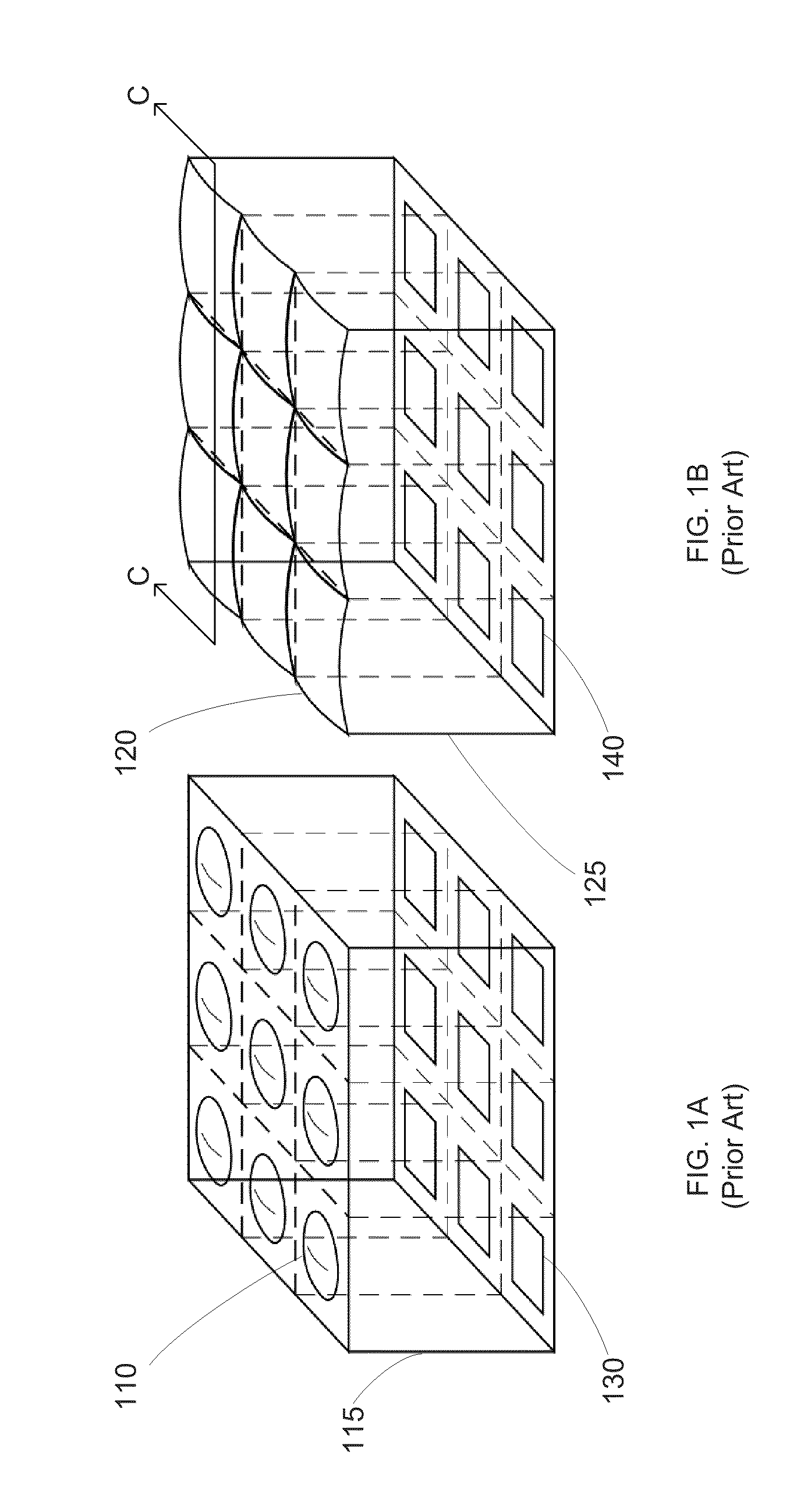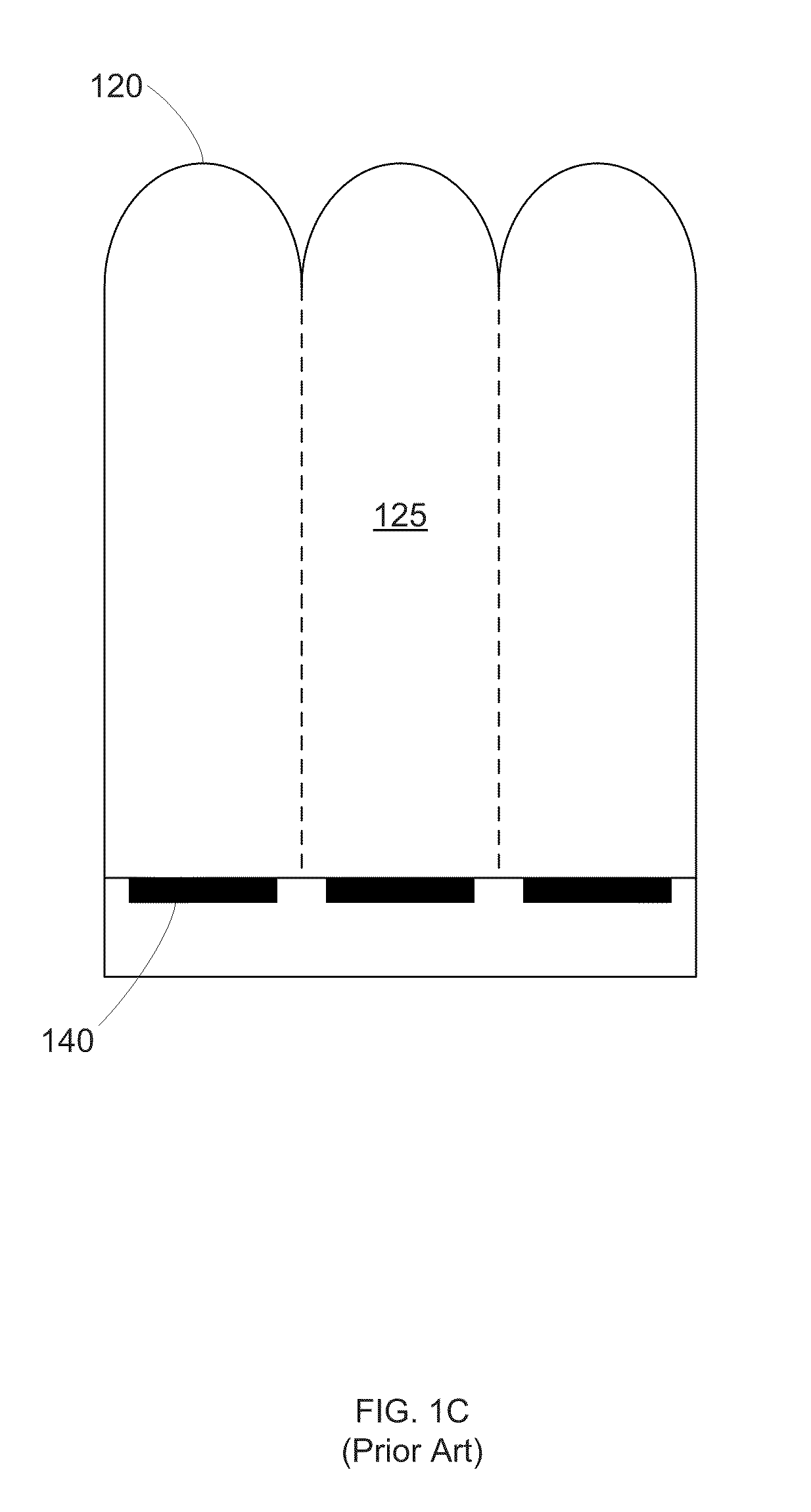Microlens arrays for enhanced light concentration
a microlens array and light focusing technology, applied in the direction of photometry using electric radiation detectors, instruments, optical radiation measurement, etc., can solve the problem of limiting the area available for light-sensitive regions, and reducing the sensitivity of the light focusing field
- Summary
- Abstract
- Description
- Claims
- Application Information
AI Technical Summary
Benefits of technology
Problems solved by technology
Method used
Image
Examples
Embodiment Construction
[0021]The aforementioned needs are satisfied by the embodiments of the present invention which provide specially designed diffractive optical elements that can focus light onto light detectors, such as the pixels of a charge coupled device (CCD) with higher efficiencies and much less cross talk than has been possible heretofore.
[0022]These and other objects and advantages of the present invention will become more fully apparent from the following description taken in conjunction with the accompanying drawings.
[0023]The embodiments of the invention are novel micron-scale lenses, “microlenses,” engineered to concentrate light efficiently onto small, light-sensitive detector elements in an integrated electronic device. By designing these inventive microlenses to accommodate diffraction effects, which dominate the behavior of light at small length scales, a new class of light-concentrating optical elements with much higher relative performance has been created. Furthermore, the new desi...
PUM
 Login to View More
Login to View More Abstract
Description
Claims
Application Information
 Login to View More
Login to View More - R&D
- Intellectual Property
- Life Sciences
- Materials
- Tech Scout
- Unparalleled Data Quality
- Higher Quality Content
- 60% Fewer Hallucinations
Browse by: Latest US Patents, China's latest patents, Technical Efficacy Thesaurus, Application Domain, Technology Topic, Popular Technical Reports.
© 2025 PatSnap. All rights reserved.Legal|Privacy policy|Modern Slavery Act Transparency Statement|Sitemap|About US| Contact US: help@patsnap.com



